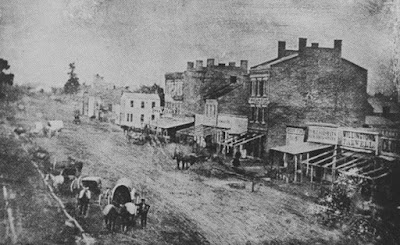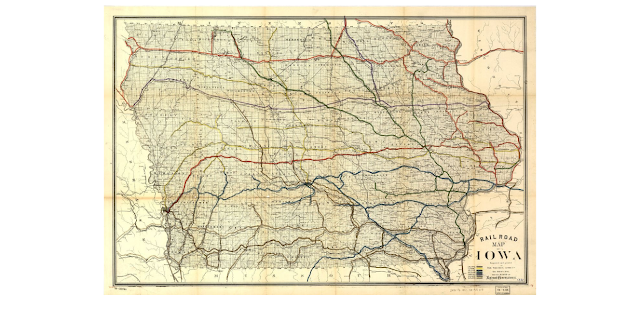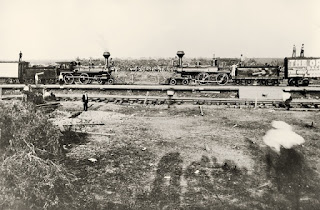Ever since the founding of the United States of America, the land considered the West has steadily moved farther west. For the sake of “Western” novels, some say the West is anything west of the Mississippi River. Others say it is west of the Missouri River. The state of Iowa is smack-dab between those two rivers. In fact, the Missouri and Mississippi form its western and eastern borders.
Iowa became part of the United States of America after the Louisiana Purchase in 1803, but uncontested U.S. control over what is now Iowa occurred only after the War of 1812 and after a series of treaties eliminated Indian claims on the state. The tribes known to inhabit Iowa in 1804 were the Sauk (Sac) and Meskwaki (Fox) on the eastern edge of Iowa along the Mississippi; the Ioway along the bank of the Des Moines River; the Oto, Missouri, and Omaha along the Missouri River, and the Sioux in the Northern and Western parts of the State. Before white settlement could begin, agreements to remove these tribes from their land began. The early to mid-nineteenth century saw immigration into Iowa of the Potawatomi and Winnebago, followed by the emigration from Iowa of nearly all Native Americans.
Beginning in the 1830s Euro-American settlements appeared in the Iowa Territory. By 1850, there were over 190 thousand people living in Iowa. Nearly 90% of the population at this time was from America, with Ohio, Indiana, and Pennsylvania contributing the most settlers. Although most immigration from other parts of the world would come later, in 1850 the immigrant groups based on size were as follows: those from Germany were the largest, followed by the Irish, then those from England, Canada, the Netherlands, Scotland, Norway, Sweden, Denmark, and Czechoslovakia. Most settlement took place in the southern and eastern counties, often near rivers, and close to rail lines. The factors that prompted settlement in Iowa included the completion of railroads to the Mississippi, the advertising of Iowa lands by railroad and steamship companies, the publication of favorable guides and articles, drought in the Ohio Valley, and a cholera epidemic in other states.
First Iowa School House
Iowa was a state many immigrant groups passed through on their way farther west. In 1846-48, members of the Church of Jesus Christ of Latter-day Saints fleeing persecution in Illinois crossed the Mississippi and strung their camps out across southern Iowa. Although it was officially a state, it was still largely unsettled country—the West. Some of my ancestors, primarily from England, were part of the wave of immigrants who had joined that church while in Europe and either rode the railroad to the westernmost terminals, or sailed up the Mississippi River in steamboats until they reached Iowa. From there, they crossed in covered wagons until they reached Council Bluffs on the Iowa side of the Missouri River and Florence on the Nebraska side of the river to continue their journey west. One of my family lines with the surname of England crossed Iowa in the Martin Handcart Company, but did not continue farther west with that same company after reaching Florence, Nebraska (Another story for another time).
Iowa became a state in 1846. The first state capitol was Iowa City on the Iowa River. Iowa City had been the third capitol of Iowa Territory and the first capitol of the new state. The cornerstone of the Old Capitol Building was placed on July 4, 1840. In 1842, it housed the Fifth Legislative Assembly of the Territory of Iowa and then became the first capitol building of the State of Iowa on December 28, 1846.
Iowa City 1854
The University of Iowa was founded on February 25, 1847, just 59 days after Iowa was admitted to the Union. The Constitution of the State of Iowa refers to a State University to be established in Iowa City "without branches at any other place." The original campus consisted of the Iowa Old Capitol Building and ten acres.
In 1855, the first classes of the State University of Iowa were held in the Iowa City Old Capitol Building. This university became the first public university in the United States to admit men and women on an equal basis. (Is there any doubt in your mind why I chose to feature this university in a few of my books?) In addition, Iowa was the world's first university to accept creative work in theater, writing, music, and art on an equal basis with academic research.
When the capitol of Iowa was moved to Des Moines in 1857 because it was determined the city was more centrally located, the Old Capitol Building became the first permanent "home" of the University, it became a permanent part of the University of Iowa at Iowa City and is still there today. It can be seen on the 1868 Birdseye Map of Iowa City in the center of two other buildings that were part of the university at that time.
By 1860, almost the entire state was settled and farmed by Euro-Americans. Subsistence frontier farming was replaced by commodity farming after the construction of railroad networks in the 1850s and 1860s.
The charge of the First Iowa Regiment, with General Lyon at its head at the Battle of Wilson's Creek
When it came to the American Civil War, Iowa contributed a disproportionately larger number of young men to fight as soldiers. For example, last year, I wrote several books about the Kansas frontier and Fort Ellsworth, which was established by a volunteer unit from Iowa led by Lieutenant Ellsworth. During my research for several books, I continually ran into military units comprised of Iowa Volunteers. Afterward their military obligations were complete—both for fighting the Civil War and the frontier wars with Native Americans that followed, these former soldiers returned to Iowa to help transform the state into an agricultural powerhouse.
1881 Railroad map for Iowa
Especially as the railroads were built across Iowa, this state supplied a great deal of food to the rest of the nation. This 1881 railroad map shows the number of east-west rail lines that crossed Iowa.
Iowa is part of the West. If nothing else, along with being a breadbasket for the East, this state should be considered one of the great gateways to the West.
My most recently published book, Figgy Pudding by Francine, includes several chapters set in Iowa City. My hero is a professor there at the university. Whether or not the university had an astronomy department, I don’t know. In my books, it did. To find the book description and link with purchase options, please CLICK HERE.
Sources:
https://en.wikipedia.org/wiki/University_of_Iowa
https://en.wikipedia.org/wiki/History_of_Iowa
file:///C:/Users/drech/Documents/Blogs-%20Planned%20&%20Posted/10%20Sweethearts%20of%20the%20West/21-11-30%20Iowa-Where%20Does%20the%20West%20Begin/iowa_history_timeline.pdf
https://en.wikisource.org/wiki/History_of_Iowa_From_the_Earliest_Times_to_the_Beginning_of_the_Twentieth_Century/1/13








































